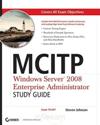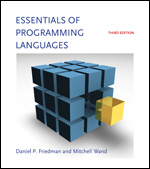作者:Chris Anderson
出版日期:April 21, 2007
出版社:Addison Wesley
页数:512
ISBN:ISBN-10: 0321374479 ISBN-13: 978-0321374479
文件格式:PDF
Product Description
“Chris Anderson was one of the chief architects of thenext-generation GUI stack, the Windows Presentation Framework (WPF),which is the subject of this book. Chris’s insights shine a light fromthe internals of WPF to those standing at the entrance, guiding youthrough the concepts that form the foundation of his creation.”
–From the foreword by Chris Sells
“As one of the architects behind WPF, Chris Andersonskillfully explains not only the ‘how,’ but also the ‘why.’ This bookis an excellent resource for anyone wanting to understand the designprinciples and best practices of WPF.”
–Anders Hejlsberg, technical fellow, Microsoft Corporation
“If WPF stands as the user interface technology for thenext generation of Windows, then Chris Anderson stands as the CharlesPetzold for the next generation of Windows user interface developers.”
–Ted Neward, founding editor, TheServerSide.NET
“This is an excellent book that does a really great jobof introducing you to WPF, and explaining how to unlock the tremendouspotential it provides.”
–Scott Guthrie, general manager, Developer Division, Microsoft
“WPF is a whole new animal when it comes to creating UIapplications, drawing on design principles originating from bothWindows Forms and the Web. Chris does a great job of not onlyexplaining how to use the new features and capabilities of WPF (withassociated code and XAML based syntax), but also explains why thingswork the way they do. As one of the architects of WPF, Chris givesgreat insight into the plumbing and design principles of WPF, as wellas the mechanics of writing code using it. This is truly essential ifyou plan to be a serious WPF developer.”
–Brian Noyes, chief architect, IDesign Inc.; Microsoft Regional Director; Microsoft MVP
“I was given the opportunity to take a look at ChrisAnderson’s book and found it to be an exceedingly valuable resource,one I can comfortably recommend to others. I can only speak for myself,but when faced with a new technology I like to have an understanding ofhow it relates to and works in relation to the technology it issupplanting. Chris starts his book by tying the WPF directly into theworld of Windows 32-bit UI in C++. Chris demonstrates both a keenunderstanding of the underlying logic that drives the WPF and how itworks and also a skill in helping the reader build on their ownknowledge through examples that mimic how you would build your cuttingedge applications.”
–Bill Sheldon, principal engineer, InterKnowlogy
Windows Presentation Foundation (WPF) replacesMicrosoft’s diverse presentation technologies with a unified,state-of-the-art platform for building rich applications. WPF combinesthe best of Windows and the Web; fully integrates user interfaces,documents, and media; and leverages the full power of XML-baseddeclarative programming.
In Essential Windows Presentation Foundation,former WPF architect Chris Anderson systematically introduces thisbreakthrough platform, focusing on the concepts and techniques workingdevelopers need in order to build robust applications for real users.Drawing on his unique experience as an architect on the team, Andersonthoroughly illuminates the crucial new concepts underlying WPF andreveals how its APIs work together to offer developers unprecedentedvalue.
Through working sample code, you’ll discoverhow WPF draws on the Web’s simple models for markup and deployment,common frame for applications, and rich server connectivity, and onWindows’ rich client model, simple programming model, strong controlover look-and-feel, and rich networking. Topics explored in depthinclude
WPF components and architectureKey WPF design decisions–and why they matterXAML markup languageControlsLayoutsVisuals and media, including 2D, 3D, video, and animationData integrationActionsStylesWPF Base ServicesEssential Windows Presentation Foundationis the definitive, authoritative, code-centric WPF reference:everything Windows developers need to create a whole new generation ofrich, graphical applications.
About the Author
Chris Anderson, architect in Microsoft’s ConnectedSystems Division, specializes in designing and architecting .NETtechnologies for the next generation of applications and services. Inten years at Microsoft, he has worked on technologies ranging fromVisual Basic 6.0 and Visual J++ 6.0 to .NET Framework 1.0 and 1.1. In2002, he joined the Windows Client team as an architect for WindowsPresentation Foundation. Anderson has spoken at numerous conferences,including PDC, TechEd, WinDev, and DevCon.







 评论 (3)
评论 (3) 